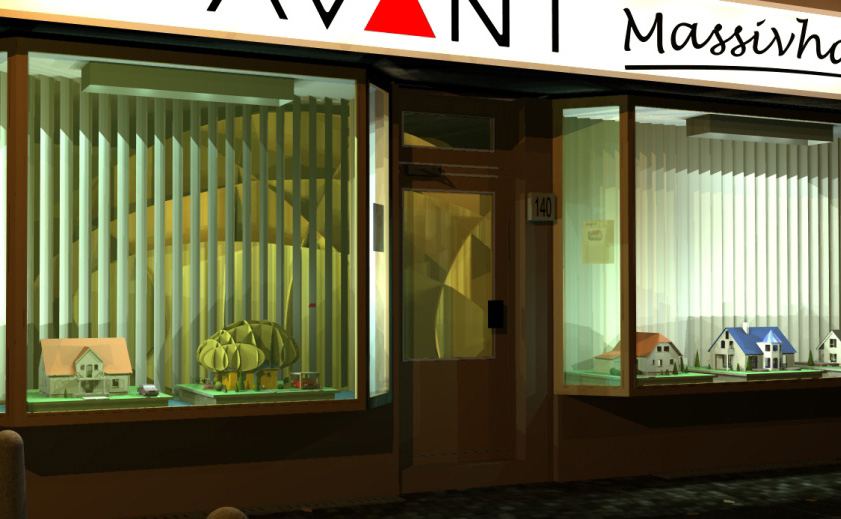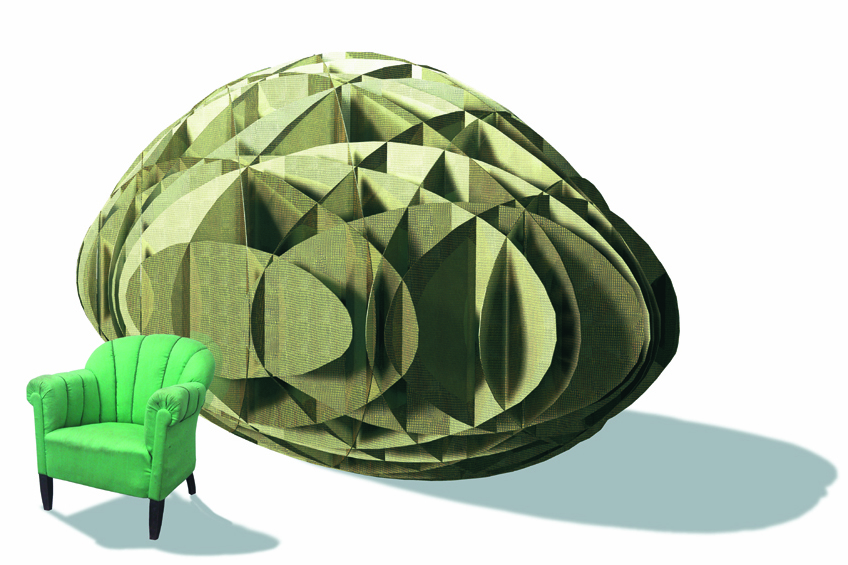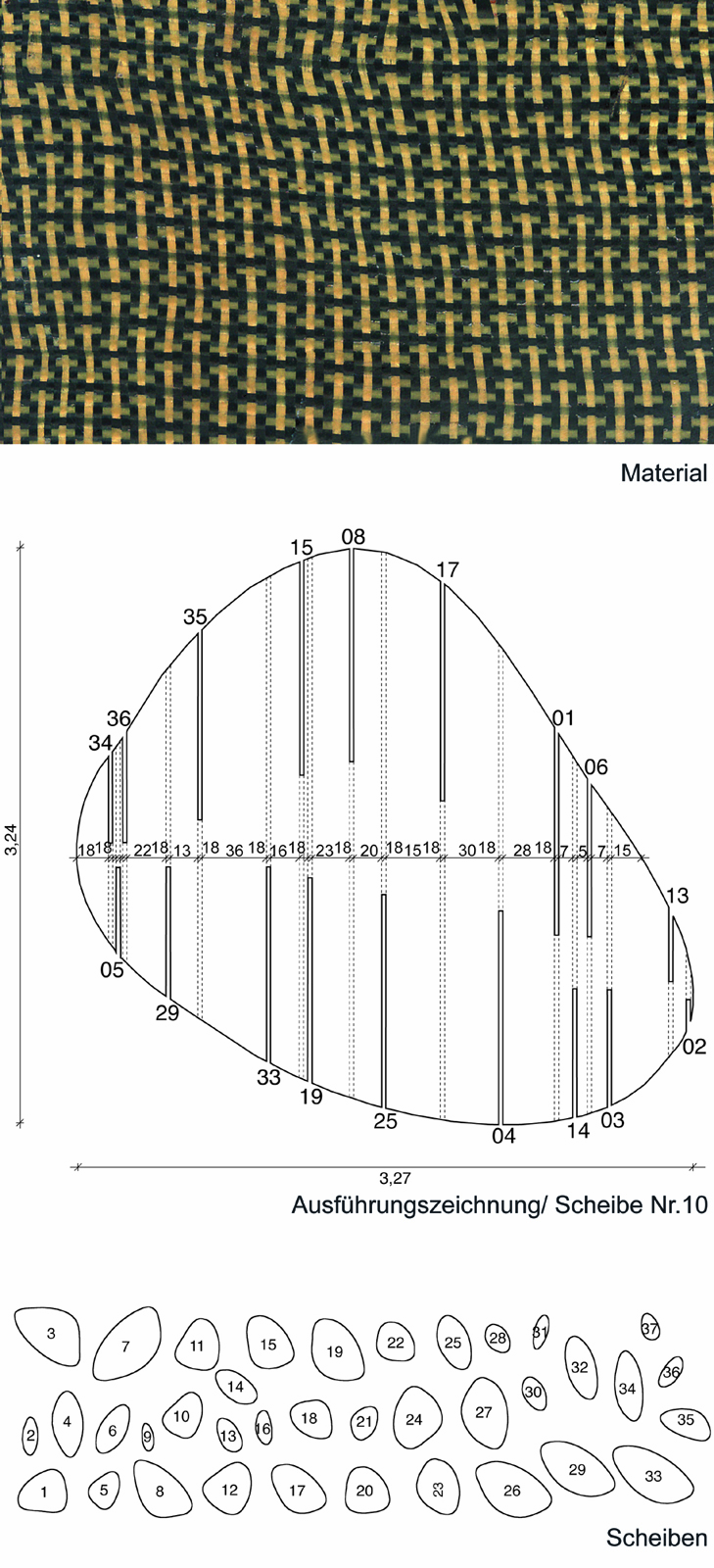The potato experiment
The potato project with the artist group “Inge’s Idea” was an ironic commentary on the architectural idiom of the time, which included potato-like objects typically placed in large (atrium) spaces. We made our own potatoes and the artists placed room-sized potatoes (and giraffes) in small dwellings. It was all exhibited at the 2002 UIA Congress.
In this country, potatoes are a staple food that cannot be ignored. The potato is used as the starting point and sole raw material for the word cocktail of “time, space and architecture”. On this topic, artists and architects will work together to clarify different views of the likeable tuber. Potatoes can sprout, can be peeled or boiled, and in firm heads and hands they turn into ordinary mash or bourgeois pomme allumettes. As chips, they can be transformed into the perfectly calculated shape of the Berliner Kongresshalle or spiritually dissolved in vodka. Deciding which preparation and physical states the group will prefer remains to be seen. In any case, we wish you: Bon appetit!
Points of view:
A: It’s probably not a good idea to only exhibit old projects. It must be possible to create a new project that you can work on together.
K: Don’t you have an old model, or maybe you could build one? Then we can do something with it.
A: Hmm, most of them are quite small, and without display panels they are hardly visible in a large exhibition space. And we don’t have the nicest ones at all, they’re with the developers.
K: But with the models we would be able to react to something; we have tried this (points to a sketch), here we have turned a Neutra villa into a stove.
A: That’s not the right scale at all – probably something like 1:6.5. Besides, wouldn’t Richard Neutra be happy to have a pot and two frying pans on the roof of his villa? I’m thinking more along the lines of the projects by Balthazar Neumann. In his buildings, there is an almost organic connection between the design of the ceilings and the paintings made on them. Here you can’t see any conflict between space and the two-dimensional image, as if architect and artist are really working together.
A: So, what should we do? It’s certainly important that everything has a temporary feeling? After all, it’s only going to be on display for 8 days.
We have imagined something made of brown cardboard – cardboard from cardboard boxes, which we can get at the supermarket. We can build all sorts of things out of cardboard. It could be different objects, like a giraffe or a potato (sketches on a piece of paper).
K: – great
A: Imagining a giraffe in an apartment on the third floor of a Berlin apartment is of course very funny.
K: – great
A: It’s really hard for us to make something completely without function. Maybe we should make a construction for a drinking fountain instead. And by the way, I don’t even know how to make a giraffe to the right scale out of cardboard:
K: Let’s make the giraffe, that’s a great idea – or maybe the potato is easier to make.
A: Potato architect (looks down at the floor).
K: You construct a big potato and we arrange furniture around it: There’s something very German about it – it’s a big, lovely staple food that people in this country love to eat in all its variations. Perhaps you could get a movie set decorator to do the furniture.
A: A potato – isn’t it an organically shaped object – placed in the room (looks up again). We could shape such an object – but how do we build it?
K: We are sculptors, so we know how to build it.




